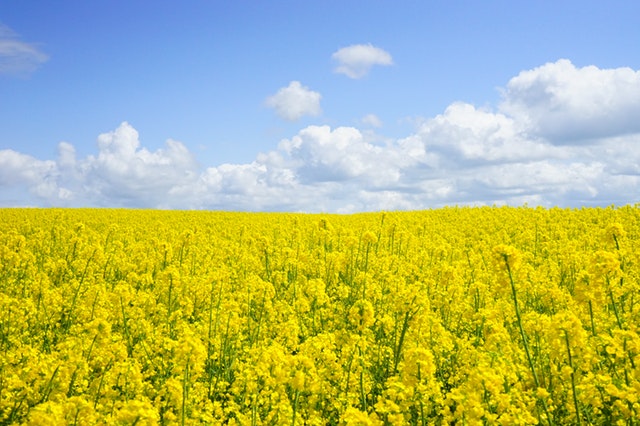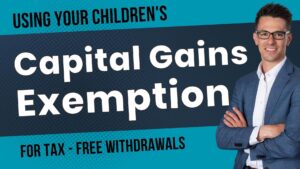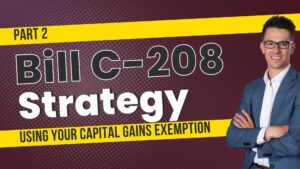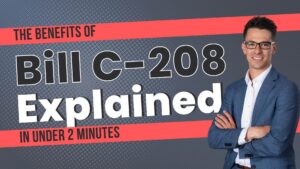Can I actually sell my farmland tax-free?
This week I’ve invited Julien Grenier, Accountant and Agricultural Manager at Talbot & Associates to provide us with insight on qualifying for your capital gains exemptions. As a financial planner, I lean heavily on professionals like Julien to provide my clients with proper tax advice. As you can see below, there is a lot to consider when selling farmland. Make sure you dot your i’s and cross your t’s before putting that “For Sale” sign up.
Julien Grenier, Accountant and Agricultural Manager at Talbot & Associates
No doubt one of the biggest questions plaguing farmers today is “Can I actually sell my farm land tax-free?”. If it seems too good to be true, heads up, it likely is. There are countless rules that go along with this exemption that can lead to additional taxes payable. If the proper steps are not taken, you could end up owing much more than you anticipated even if you are eligible for the exemption. Here are just a few of the things to keep in mind before taking advantage of one of the biggest tax breaks offered to farmers.
Generally speaking, all farm land, quota and buildings are considered eligible for the capital gain exemption. As well as property owned by a farm partnership and shares in a family farm corporation. Since only property qualifies for the exemption, farm machinery is not eligible.
There are two methods to use when determining if your property is eligible for the exemption and it starts with when the property was purchased. For property purchased on or before June 17, 1987 the property must be used in farming for any five years preceding its sale. This method is simple and straightforward and in true CRA fashion, it was too easy to last. For all property purchased after June 17th, 1987 the property must be owned continuously for 24 months and in any 2 years of its ownership, the seller’s gross income from farming must exceed their net income from other sources. This means that many hobby or part-time farmers may not qualify. This income test is dropped for partnerships and corporations if one of the partners/shareholders were actively engaged in the farming business. Actively engaged applies to those who spend more time on the farm than any other income generating venture.
I’ve sold my Farm Property and I am eligible for the exemption, now what?
The first step is in determining how much Capital Gain Exemption (CGE) you have. As the CGE is attributed to the taxpayer and not on the land itself, you can use up portions of your exemption over your lifetime and you could eventually run out before you run out of property to sell. As of April 21, 2015, the lifetime capital gain exemption was increased to $1 million. However, if you made an election in 1994 to trigger your CGE of $100,000 and crystallized the gain on your property you unfortunately also surrendered $100,000 from your farm CGE and now only have $900,000 left-over. Furthermore, this triggers a new acquisition date of 1994 effectively changing the rules needed to qualify for the CGE
The next step is in determining how much of a capital gain you will be reporting on your tax return, because yes, even though the whole sale could be tax-free the gain must still be reported as income and then a deduction is made later to remove it from taxable income. So, if you received the full amount, simply put you must report it all. If instead, you will receive the money in installments you can elect to claim a reserve and claim a portion of the gain this year and claim the rest in other years up to a maximum of 5 years (10 if selling to your child). The rule here is that you MUST claim the full gain by the time the 5 (10) years are up even if the full payment has not been received. What you claim must be either the percentage of the amount received or 20% (10%) per year, whichever is higher.
A question often asked is: “why would I bother splitting up the gain when the full amount is not taxable?”. Answer: Even though the sale will not increase your taxable income, you may still end up paying. As mentioned, the sale is reported on your return giving you your net income and later a deduction is claimed to bring you to your taxable income. This means that all benefits that you receive that are calculated based on your net income will be affected. Things like: Old Age Security pension (OAS), Employment Insurance (EI), Guaranteed Income Supplements (GIS) and your Canada Child Benefit (CCB).
As if that wasn’t enough, the CRA also has a method of calculating tax that does not consider any of a taxpayer’s tax breaks. In fact, they cut them all out and calculate tax at a lower rate. This is called Alternative Minimum Tax (AMT). This is not a tax that only applies to sales of farm property. This calculation gets done on every single tax return that we produce. If a taxpayer has a capital gain, usually only half of it is taxable and the other half is tax-free. This calculation kicks that out. It also forgoes the CGE, among other possible tax breaks and calculates a tax payable on the lowest tax rate (15% in 2018). If this amount of taxes owing ever exceeds a taxpayer’s regular amount owing this must be used instead of the regular amount. Based on our calculations, any capital gain above $134,000 has the potential to trigger AMT, depending on the taxpayer’s other income in the year. The only silver lining is that this amount paid can be used against taxes owing for the next 7 years but if you do not owe tax after the sale of your farm property you can consider that money gone.
With proper planning, there are ways to avoid or at the very least minimize the amount owing on the sale of farm property. However, often these strategies take several years to put into place. For further information on sales of farm property, do not hesitate to give our office a call.








